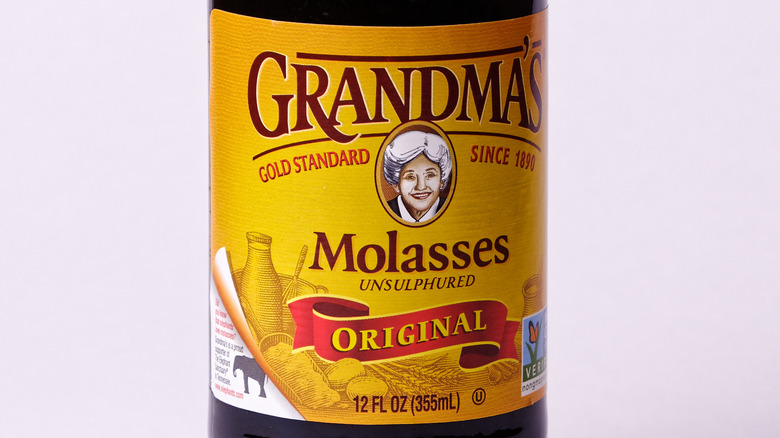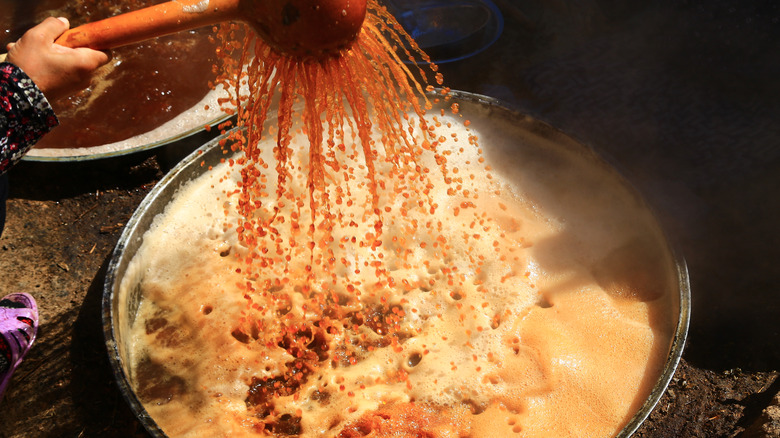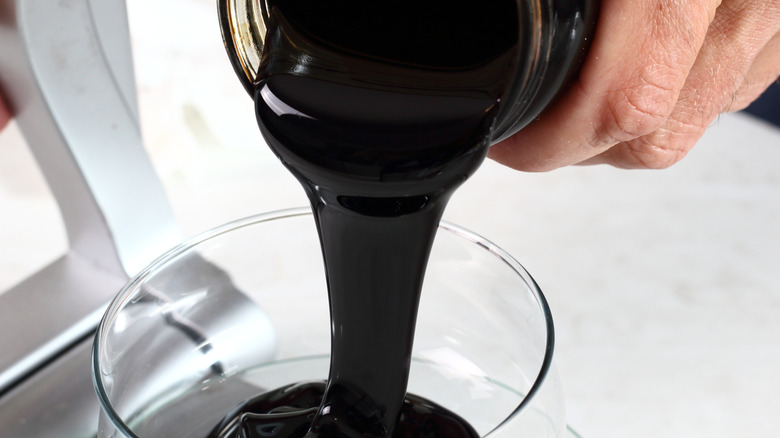The Difference Between Sulphured And Unsulphured Molasses
Molasses can be used to add sweetness and flavor to anything from cookies and gingerbread to savory foods like glazed ham — even barbecue sauce (via Taste of Home). But what is molasses?
It's actually a byproduct of the sugar-making process. Sugarcane is crushed to extract the juice inside, which is then simmered until sugar crystals form and can be extracted. Left behind is a dark, sticky liquid, better known as molasses. However, what you might not know is that there are actually two different types of molasses: sulphured and unsulphured, and one is generally considered better than the other.
Unsulphured (or regular) molasses is made from mature sugar cane, while the sulphured product is made from younger, green sugarcane. The difference between the two is that green sugarcane needs to be preserved until it can be processed, so it's treated with a preservative called sulphur dioxide (via My Recipes). Nowadays, almost all commonly available molasses is unsulphured, and for good reason.
Why unsulphured molasses is more common than sulphured
While it might seem like a no-brainer to choose the molasses that hasn't been treated with an added preservative, that's not why you won't usually find sulphured molasses stocked in the baking aisle. Instead, it's a matter of taste.
According to My Recipes, the maturity of the sugarcane determines both the quantity and the sweetness of the syrup it produces. This means making molasses from young sugarcane not only produces less-sweet molasses, but less of it. Not only that, but the process of treating the sugarcane with sulphur dioxide can impart a strong, chemical taste that most people (unsurprisingly) don't want in their molasses (via The Kitchn).
Meanwhile, unsulphured molasses has a richer, sweeter flavor because the sugarcane it was made from has had time to ripen in the sun (via Taste of Home). So, while you can use either type in a recipe that calls for molasses, it's typically considered better to use unsulphured molasses whenever possible. Luckily, you're much more likely to find unsulphured molasses at the store than the sulphured kind.
The difference between light, dark, and blackstrap molasses
Whether sulphured or unsulphured, molasses comes in three "colors" (though they all look relatively similar): light, dark, and blackstrap (the darkest). The color has nothing to do with quality, only how much the molasses has been boiled. Light, or mild molasses, is the least-processed and is typically just boiled once. This means it has more sugar left in it compared to the other two colors (via All Recipes). Because of its sweetness and milder flavor, light molasses is often used in dessert recipes. Dark molasses, on the other hand, is boiled twice. This means more sugar is removed, giving the molasses a more intense in flavor, a slightly darker color, and a thicker consistency than light molasses.
Finally, blackstrap molasses is boiled for a third time, making it the darkest and least sweet version of molasses. You can still cook and even bake with it, and many enjoy its intense flavor, but that's not all blackstrap molasses is known for. According to Healthline, blackstrap molasses is rich in several important vitamins and minerals, from iron to calcium, magnesium, vitamin B6, selenium and potassium. Some even claim it can aid in hair growth, and act as a conditioning treatment when mixed with water (via Taste of Home).


